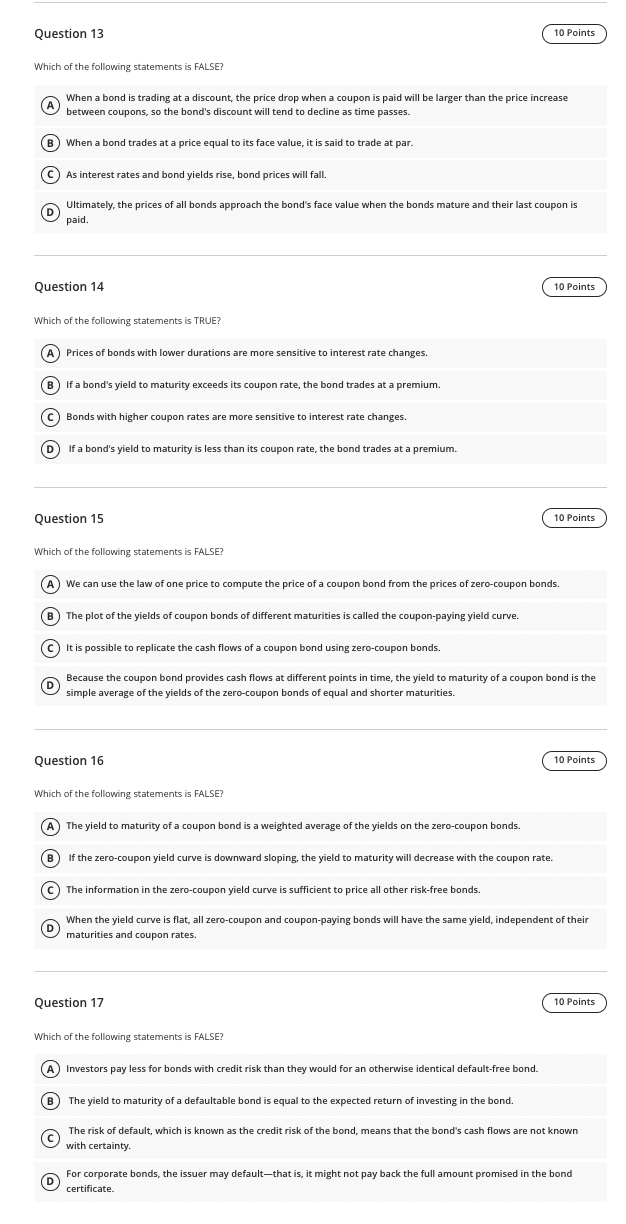
Which of the following statements is FALSE? When a bond is trading at a discount, the price drop when a coupon is paid will be larger than the price increase between coupons, so the bond's discount will tend to decline as time passes. When a bond trades at a price equal to its face value, it is said to trade at par. As interest rates and bond yields rise, bond prices will fall. Ultimately, the prices of all bonds approach the bond's face value when the bonds mature and their last coupon is paid. Question 14 Which of the following statements is TRUE? Prices of bonds with lower durations are more sensitive to interest rate changes. If a bond's yield to maturity exceeds its coupon rate, the bond trades at a premium. Bonds with higher coupon rates are more sensitive to interest rate changes. If a bond's yield to maturity is less than its coupon rate, the bond trades at a premium. Question 15 Which of the following statements is FALSE? We can use the law of one price to compute the price of a coupon bond from the prices of zero-coupon bonds. The plot of the yields of coupon bonds of different maturities is called the coupon-paying yield curve. It is possible to replicate the cash flows of a coupon bond using zero-coupon bonds. Because the coupon bond provides cash flows at different points in time, the yield to maturity of a coupon bond is the simple average of the yields of the zero-coupon bonds of equal and shorter maturities. Question 16 Which of the following statements is FALSE? The yield to maturity of a coupon bond is a weighted average of the yields on the zero-coupon bonds. If the zero-coupon yield curve is downward sloping, the yield to maturity will decrease with the coupon rate. The information in the zero-coupon yield curve is sufficient to price all other risk-free bonds. When the yield curve is flat, all zero-coupon and coupon-paying bonds will have the same yield, independent of their maturities and coupon rates. Question 17 Which of the following statements is FALSE? Investors pay less for bonds with credit risk than they would for an otherwise identical default-free bond. The yield to maturity of a defaultable bond is equal to the expected return of investing in the bond. The risk of default, which is known as the credit risk of the bond, means that the bond's cash flows are not known with certainty. For corporate bonds, the issuer may default-that is, it might not pay back the full amount promised in the bond certificate







